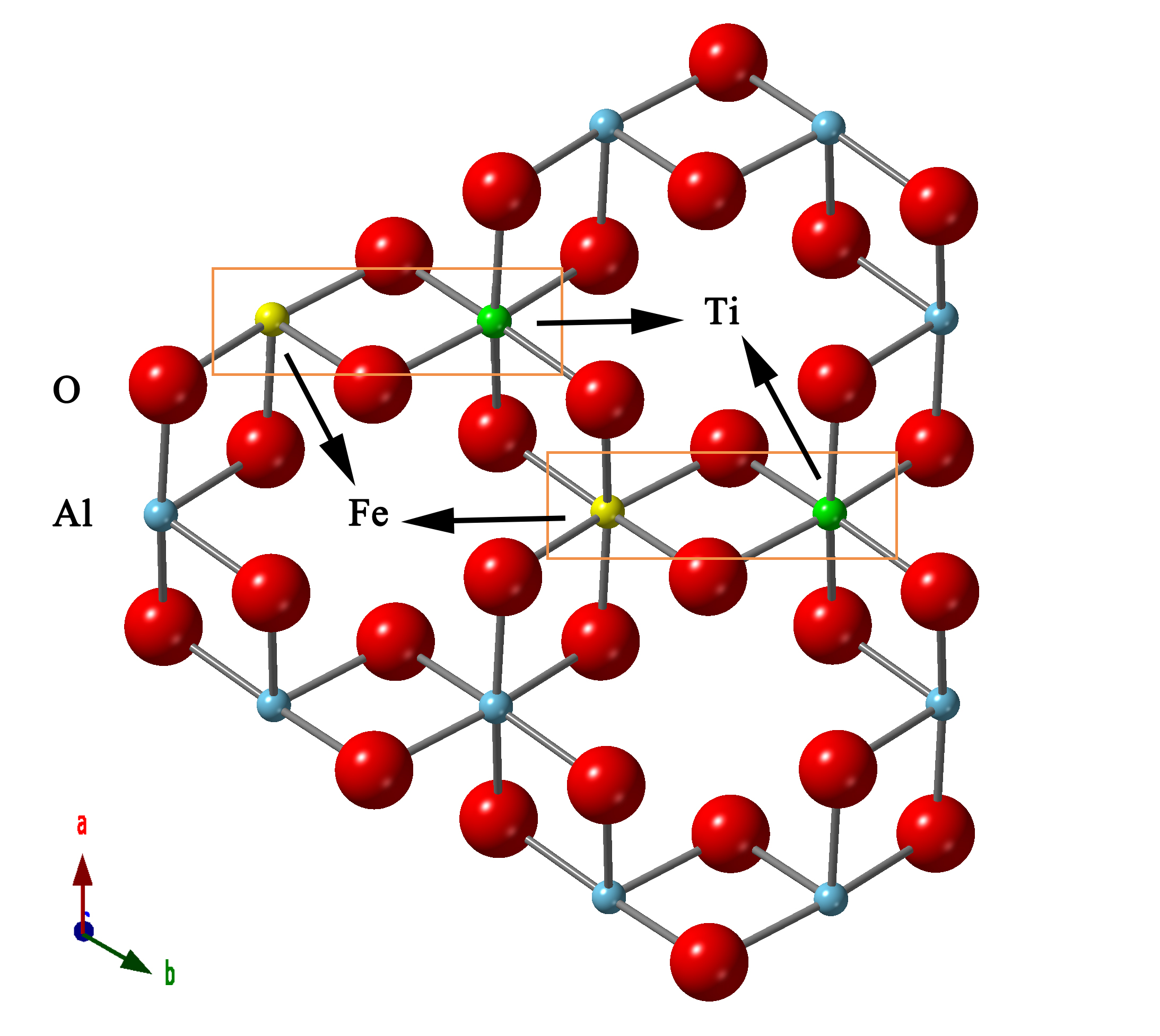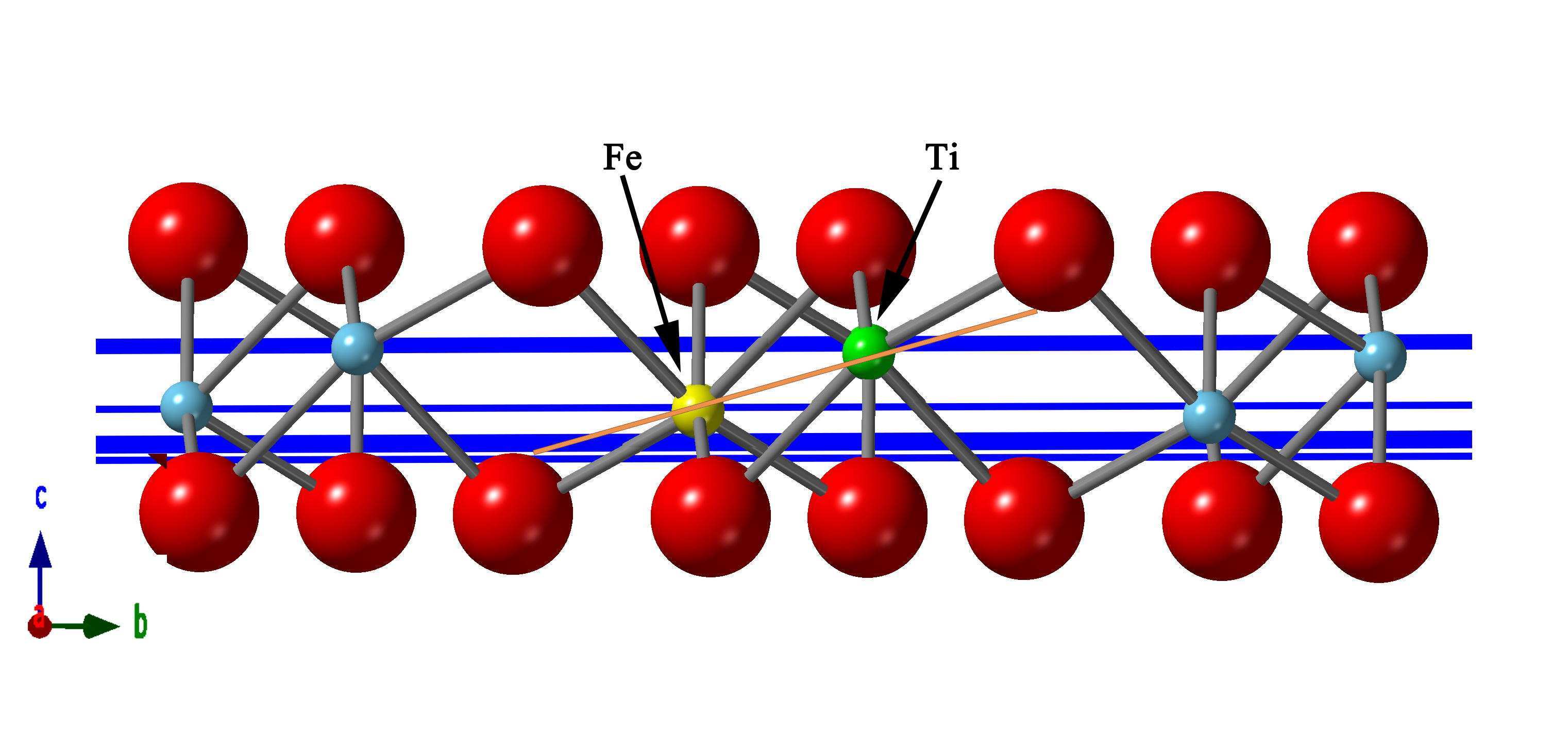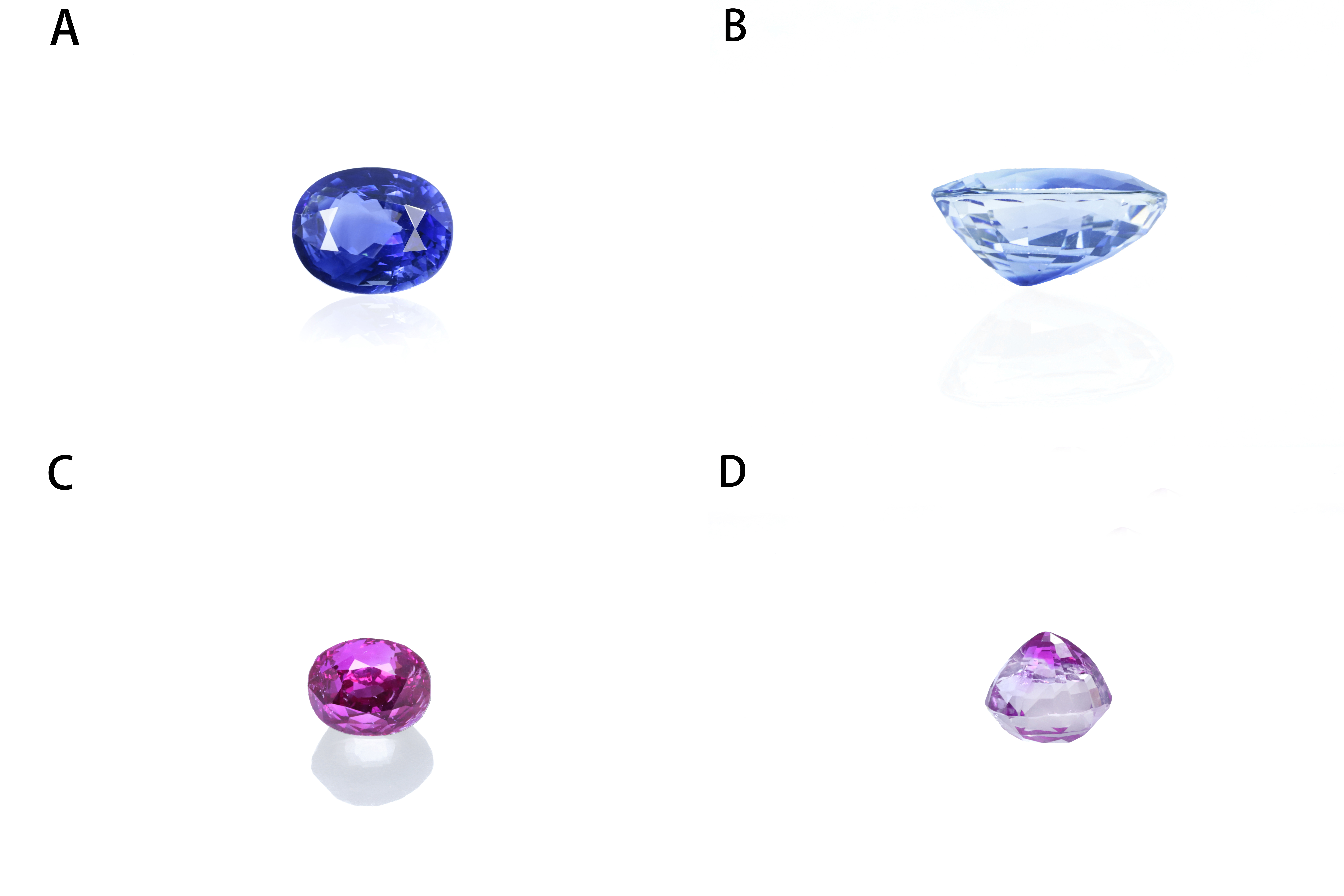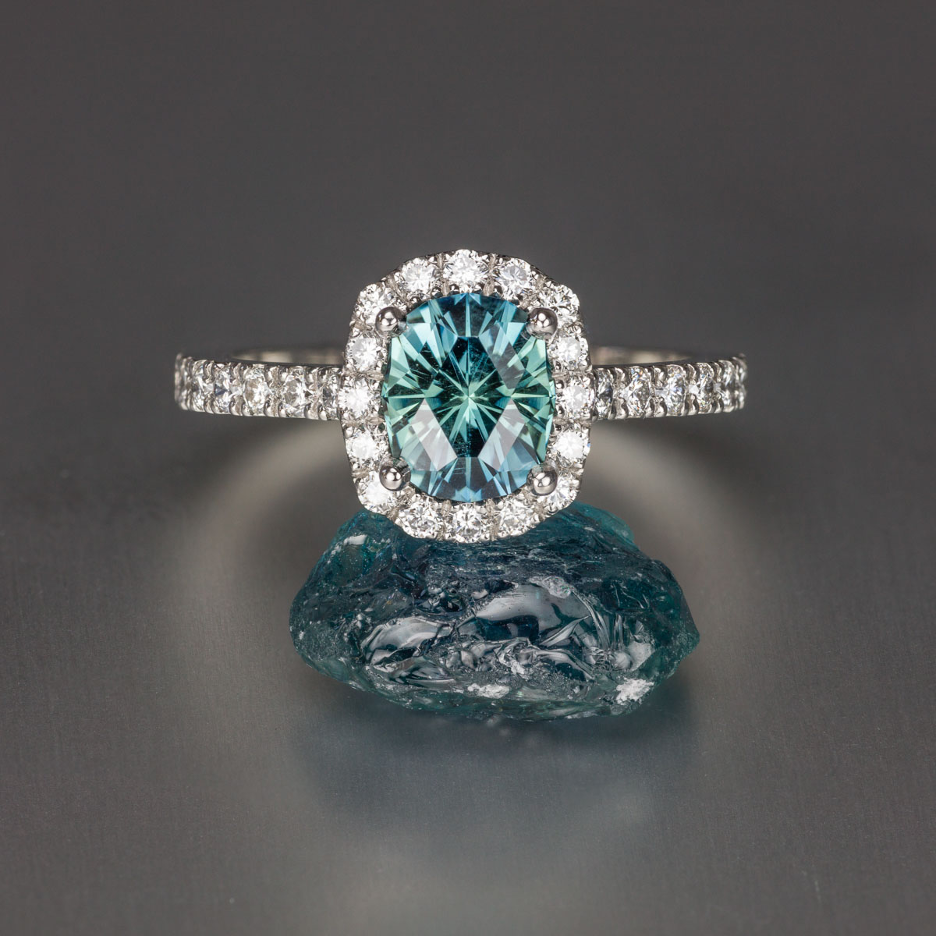ONLINE MESSAGE
GUILD looks forward to your suggestions.
If you have any cooperation or consultation, please feel free to contact us.
February 2023
Color zoning refers to the uneven distribution of color within a gemstone, which is mainly caused by temperature changes or the uneven incorporation of certain trace elements during the gem’s formation (Gilbertson, 2016). Blue sapphires usually develop significant color zoning. It is well established that the blue color in sapphire comes from Fe2+ and Ti4+ impurities in Al2O3 when they substitute Al3+ and become Fe3+ and Ti3+ ions by electron transfer (Moon and Phillips, 2005). These absorbing ion pairs are aligned at an angle to the c-axis of the sapphire and the plane of blue color zoning is perpendicular to the c-axis (figure 1).


Figure 1. The orientation of straight blue zoning was controlled by the host. Top: Fe2+ and Ti4+ substitute Al3+ in the sapphire structure. Bottom: Fe-Ti ion pairs aligned at an angle to the c-axis and the straight blue zoning was perpendicular to the c-axis. Illustrated by Xueying Sun.
Orienting sapphires presents challenges to the cutters. Sawing and preforming are usually required and are the most critical steps. An experienced cutter mutes the face-up effects of color zoning by arranging uneven color zones to run parallel to the keel lines, or by placing a small bit of concentrated color at the culet. Then, the color can be reflected to a maximum extent throughout the gem when viewed face-up, thus, the best color is achieved. This technique is also mentioned by Gilbertson (Gilbertson, 2016). Guild Gem Laboratories ever received several sapphires with such a phenomenon. This sapphire shows an intense blue color face up (figure 2A), while when observing from the side, the obvious color zoning is shown. In fact, the color is only concentrated at the culet (figure 2B). Apart from the blue sapphire, a faceted sapphire exhibiting an extremely vivid purple color also obtain its color in the same way (figure 2C-D). Similarly, this cutting technique applies to all the gems with obvious color zoning. It is notable to mention that while many sapphires have their best color down the c-axis, cutters may be able to tilt the orientation of the table slightly during preforming and save significant weight while still obtaining fine color.

Figure 2. The sapphire has a rich color patch at the culet. The intense blue color can be observed from the table, while the obvious color division is shown from the side. Photos by Huixin Zhao.
Besides, sapphires are also well known for their wide range of colors besides blue, including pink, purple, yellow, green, and violet. Therefore, observing two or three colors is common for this variety. Montana sapphires often bear various pastel colors and exceptional clarity. To present the maximum beauty of the unique color distribution, “Helena cut”, named in honor of Montana’s state capital, is created and applied by Jeff Hapeman (Palke, 2019). This cut helps deepen the color of these typically pastel-hued gemstones and the various colors blend well in the elegant but slightly angular and geometric outline (figure 3).

Figure 3. A ring featuring 1.59 ct sapphire from Rock Creek, Montana with “Helena Cut”. Photo courtesy of Jeff Hapeman.
References
Gilbertson A. (2016) Value Factors, Design, and Cut Quality of Colored Gemstones (Non-Diamond). The GemGuide.
Moon A.R., Phillips M.R. (2005) Defect Clustering and Color in Fe, Ti: α-Al2O3. Journal of the American Ceramic Society, Vol. 77, No. 2, pp. 356-367.
Palke A.C. (2019) Jeff Hapeman: Stories from a Gem Cutter. Gems & Gemology, Vol. 55, No. 1, pp. 140-141.
GUILD looks forward to your suggestions.
If you have any cooperation or consultation, please feel free to contact us.